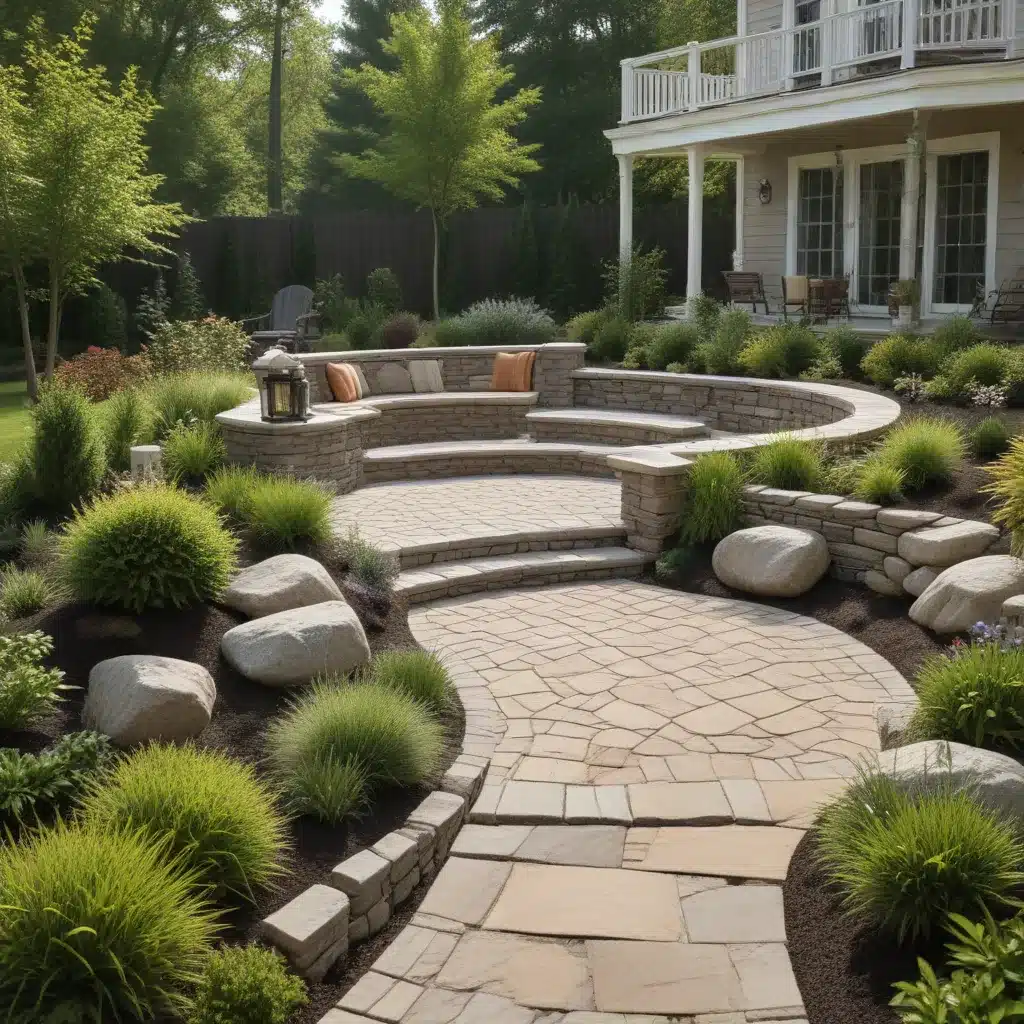
In an era where land and resources are at a premium, the ability to design landscapes that fulfill diverse functions has become paramount. As tree care specialists at TriCounty Tree Care, we understand the power of multifunctional landscaping – the art of crafting outdoor spaces that not only captivate the senses but also serve the practical and ecological needs of their users.
Principles of Multifunctional Design
Effective multifunctional landscape design hinges on the seamless integration of functionality, aesthetics, and sustainability. By layering diverse elements and considering the community’s evolving requirements, we can transform ordinary outdoor spaces into veritable masterpieces that elevate the human experience.
Functionality Layering
The cornerstone of multifunctional design lies in the strategic layering of functional elements. A well-designed landscape should not merely look beautiful, but also provide tangible benefits to its users. This may include incorporating productive gardens that supply fresh produce, recreational areas that encourage physical activity, and ecological zones that support biodiversity and natural processes.
Aesthetic and Practical Integration
Striking a balance between aesthetic appeal and practical functionality is crucial. Designers must thoughtfully combine visually striking features, such as ornamental plantings and hardscape elements, with utilitarian components that enhance the user experience. By blending form and function, we create landscapes that are not only pleasing to the eye but also responsive to the diverse needs of the community.
Prioritizing Community Needs
Understanding the specific requirements and preferences of the local community is essential for designing multifunctional landscapes. Engaging with stakeholders, from residents to municipal authorities, allows us to tailor the landscape to address the unique needs and aspirations of the people who will ultimately interact with and benefit from the space.
Landscape Elements for Multitasking
Crafting a multifunctional landscape involves the strategic integration of various elements, each serving multiple purposes and contributing to the overall cohesion and functionality of the design.
Productive Gardens
Integrating productive gardens into the landscape design not only enhances the visual appeal but also provides a sustainable source of fresh, locally grown produce. By incorporating edible plants, herb gardens, and even small-scale orchards, we can create vibrant, community-oriented spaces that foster a connection to the land and promote self-sufficiency.
Recreational Spaces
Multifunctional landscapes should incorporate diverse recreational opportunities that cater to users of all ages and abilities. This may include areas for active pursuits, such as playgrounds, sports courts, or fitness trails, as well as more passive recreational zones, like tranquil seating areas, meditation gardens, or nature observation platforms.
Ecological Zones
Preserving and enhancing the ecological integrity of the landscape is a crucial component of multifunctional design. Incorporating native plant species, pollinator-friendly gardens, and habitat corridors can support local biodiversity, improve air and water quality, and foster a deeper connection between people and the natural world.
Sustainable Material Choices
Embracing sustainable practices is essential for the long-term viability and resilience of multifunctional landscapes. By thoughtfully selecting materials and employing eco-friendly strategies, we can minimize the environmental impact while ensuring the longevity and adaptability of the design.
Natural and Local Resources
Prioritizing the use of locally sourced, natural materials, such as native stone, reclaimed wood, or regionally appropriate plants, not only reduces the carbon footprint of the project but also reinforces a sense of place and cultural identity within the landscape.
Recycled and Repurposed Items
Incorporating recycled or repurposed elements, such as reclaimed building materials, salvaged furniture, or upcycled art installations, can infuse the landscape with a unique character while diverting waste from landfills and contributing to a circular economy.
Low-Maintenance Solutions
Designing for long-term sustainability also involves selecting low-maintenance landscape components that require minimal inputs of water, fertilizers, or pesticides. This may include the use of drought-tolerant plants, permeable paving materials, or integrated stormwater management systems that reduce the burden of ongoing maintenance and enhance the landscape’s ecological resilience.
Inclusive and Accessible Design
Truly multifunctional landscapes must be inclusive, catering to the diverse needs and abilities of all community members. By prioritizing universal accessibility and fostering a sense of belonging, we can create outdoor spaces that are truly welcoming and empowering for everyone.
Universal Accessibility
Ensuring that the landscape is designed with universal accessibility in mind is crucial for promoting inclusivity and equity. This may involve incorporating ADA-compliant pathways, adaptive play equipment, and sensory-rich elements that cater to individuals with varying physical, cognitive, or sensory needs.
Multigenerational Appeal
Multifunctional landscapes should be designed to engage and delight users of all ages, from young children to older adults. By incorporating features that appeal to diverse age groups, such as intergenerational gathering spaces, educational nature trails, or multigenerational fitness equipment, we can foster a sense of community and encourage shared experiences across generations.
Community Engagement
Actively engaging the community in the design and stewardship of multifunctional landscapes is key to fostering a sense of ownership and investment. This may involve hosting design workshops, organizing volunteer events for landscape maintenance, or establishing partnerships with local organizations to curate programming and activities that cater to the diverse interests and needs of the community.
By embracing the principles of multifunctional design, leveraging sustainable material choices, and prioritizing inclusive and accessible features, the team at TriCounty Tree Care is committed to creating outdoor spaces that serve as true community hubs – vibrant, resilient, and responsive to the evolving needs of the people they serve. Explore our website to learn more about our innovative landscape solutions and how we can transform your outdoor environment into a multifunctional masterpiece.


